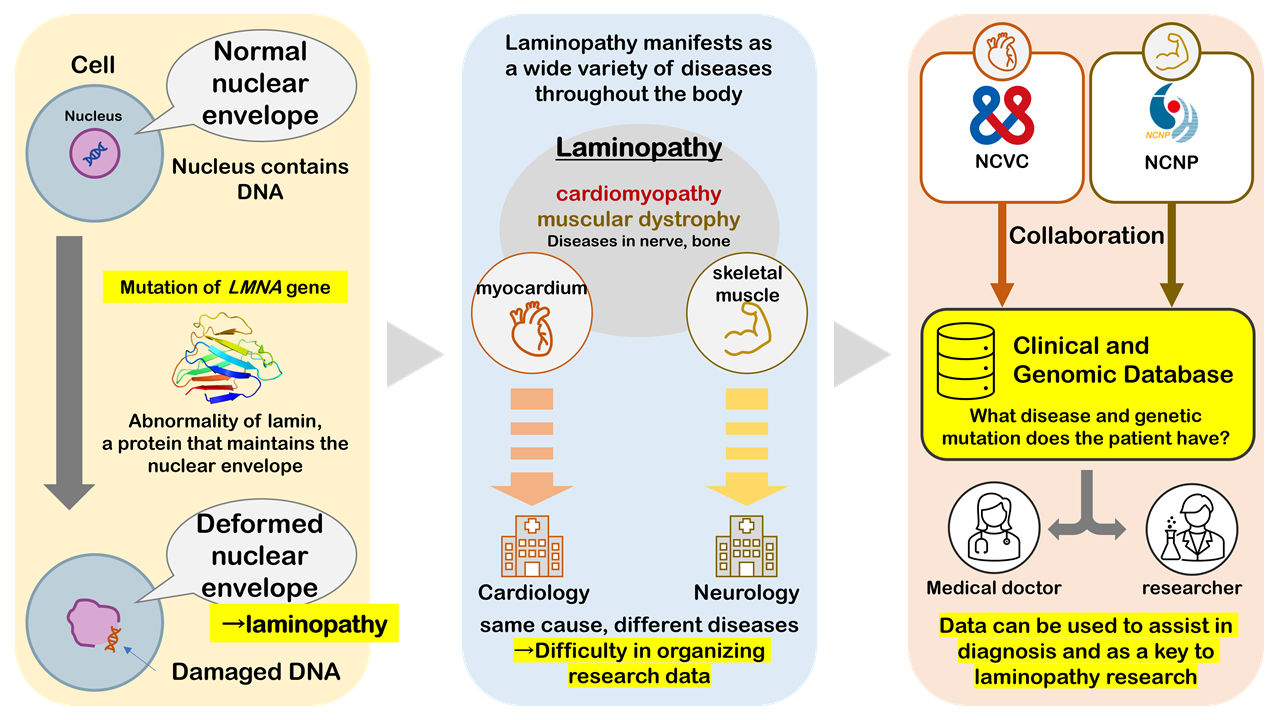Development of an integrated database for clinical and genomic information of laminopathy.
Abstract
Most cells in the body have a nucleus, which encases DNA like an envelope. If the nuclear membrane becomes abnormal, DNA can be more easily damaged, increasing the possibility that the normal function of the cell will be disrupted. The membrane not only performs as an envelope but also as a "workplace" where many proteins gather to regulate genes, so the disruption of it causes a very wide impact.
We call the diseases caused by nuclear membrane abnormalities collectively laminopathy. However, the actual symptoms of laminopathy are manifested in various organs, including the heart (cardiomyopathy), skeletal muscle (muscular dystrophy), and even nerves and bones, and differ from patient to patient. For this reason, few patients are identified as having laminopathy, and many are treated at different hospitals for each disease. In other words, to study laminopathy, we need to collect data on a wide range of diseases throughout the body and across the boundaries of medical institutions and departments.
Then, what kind of data is needed? The main cause of laminopathy is a mutation of the LMNA gene, which is the blueprint for a protein called "lamin." This provides not only the strength of the membrane but also is thought to regulate and repair DNA along with other proteins. When we test the genes of patients suspected of having laminopathy, we sometimes find mutations in the LMNA gene. We believe that genetic information is important for elucidating the mechanism of laminopathy and developing treatment methods.
Therefore, in this study, the National Cerebral and Cardiovascular Center and the National Center of Neurology and Psychiatry collaborate to collect and integrate genetic information from patients with cardiac and skeletal muscle diseases. We are trying to construct a genome database that contains not only genetic but also clinical information such as gender, age, type of disease, and various test results. We expect the information in this database will help to diagnose or accelerate the laminopathy studies.

Perspectives
The information in the database will assist in the diagnosis of patients with suspected laminopathy. It will also provide researchers with easier access to information for laminopathy research. I believe the database will accelerate the path to identifying the cause and developing a cure for laminopathy.
Comments from principal researcher
Yasuki ISHIHARA, National Cardiovascular Center, Biobank, Research Fellow
The National Cardiovascular Center Biobank collects and accumulates clinical and genetic information with the consent of many patients with cardiovascular diseases. For rare diseases such as laminopathy, which affects only about 1 in 100,000 people, there is a research difficulty in that the available information is very scarce. We hope to find keys to elucidate the pathogenesis of rare diseases and develop treatments from the large-scale data collected in the biobank.

Shared Researchers
Yoshihiko SAITO, National Center of Neurology and Psychiatry, Medical Genome Center
